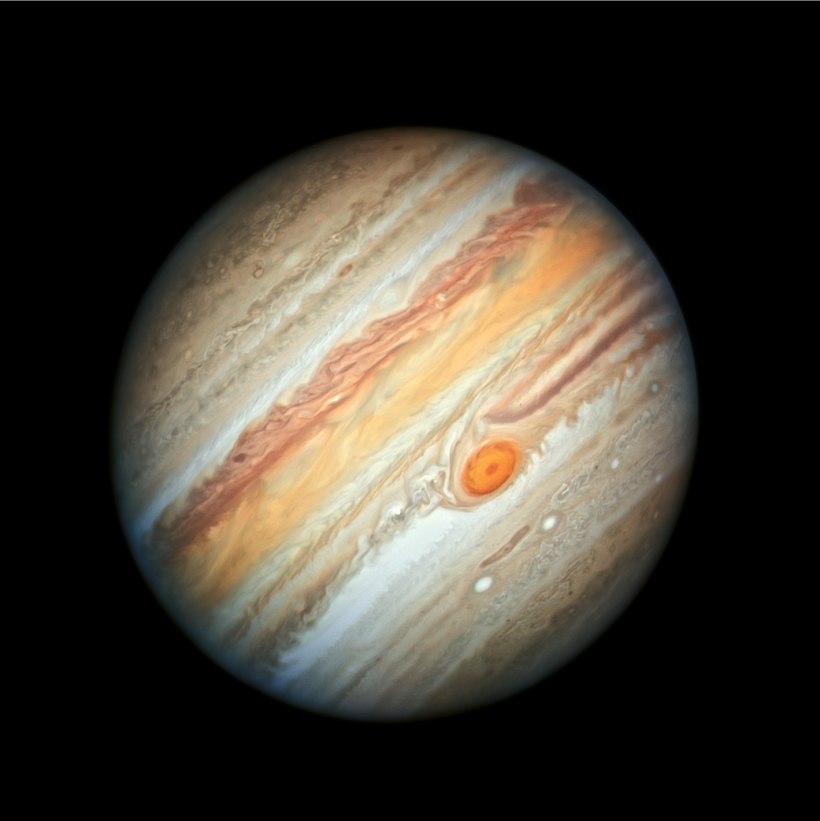Astronomers have observed Jupiter's Great Red Spot for centuries and are now curious as to whether or not the gas giant's distinct feature is repleting and may eventually be gone. However, a recent study shows that there is nothing to fuss about. The Great Red Spot is here to stay, at least during our lifetime.
THE CAUSE OF ALARM
Most of the alarm about the seemingly falling apart of Jupiter's Great Red Spot came from amateur astronomers who were able to observe rose-colored clouds breaking away from the 15,000-mile-wide storm. Last May, these astronomers reported observing giant streamers of gas that looks as if it is peeling away from the outer rim of Jupiter's Great Red Spot and joining into the winds that circle the planet.
These watchers are the first to claim that Jupiter's Great Red Spot is diminishing in size and may as well be on its way to the disappearance. However, Philip S. Marcus, a professor of fluid mechanics at the University of California Berkeley, begs to differ. During the meeting of the Division of Fluid Dynamics of the American Physical Society in Seattle, he explains that what the people are observing are only the odd dynamics brought on by the weather inside the planet.
A CELESTIAL CELEBRITY
For centuries and generations of astronomers, Jupiter's Great Red Spot tickles the curiosity. The Great Red Spot was first observed by English scientist Robert Hooke in 1664. It wasn't known as the Great Red Spot. Then, it was just an oval-shaped spot against the backdrop of the giant planet.
The following year, Italian astronomer Giovanni Cassini observed the same oval-shaped spot and described it in detail. After his death, countless astronomers tried to make sense of the visible spot on the planet. But, there was a moment in astronomical history that Jupiter's Great Red Spot was absent in astronomical notes. It seems observers lost track of the Great Red Spot for almost a century. It wasn't sure if the Great Red Spot disappeared for some time and eventually occurred back on the planet or that no one was looking and searching carefully for it during that time.
Jupiter's Great Red Spot has been present for at least 189 years and even centuries before that, and that is why some astronomers believe that it won't be gone anytime soon, and there are various reasons behind that. For instance, Jupiter's Great Red Spot is an anticyclone, which means it is a high-pressure system that rotates in counter-clockwise direction due to the fact that it is located at the planet's southern hemisphere. Cyclones are also prevalent in Jupiter, but the warm air within the cyclones forms wispy clouds -- sometimes, no clouds. Hence, according to Marcus, in the context of the Great Red Spot, looking at the surface level alone can be very misleading.
He explains that the clouds visible at Jupiter's atmosphere do not entirely tell what is going on inside the planet. "You can't just conclude that if a cloud is getting smaller than the underlying vortex is getting smaller," he said. Marcus and his team have been studying the Great Red Spot and other Jovian anticyclones through computer simulations. He explains that the clouds of anticyclones are not always reflective of the boundaries of the underlying vortex. However, they can give clues to nearby cyclones.
In the simulations developed by Marcus and his colleagues, it is observed that there is a phenomenon for what he claims as to the odd dynamics in the Great Red Spot. In every decade, a cyclone will get near the Great Red Spot, and this will cause their winds to collide and deflect at a certain angle. Marcus compares this phenomenon to two fire hoses aimed at each other. He explains that while this phenomenon is happening, a smaller anticyclone was merging with the storm. This forms the blade-shaped clouds that are seen separating from the spot. He also added that this is just a normal event on the planet.













![Sat-Nav in Space: Best Route Between Two Worlds Calculated Using 'Knot Theory' [Study]](https://1721181113.rsc.cdn77.org/data/thumbs/full/53194/258/146/50/40/sat-nav-in-space-best-route-between-two-worlds-calculated-using-knot-theory-study.png)

